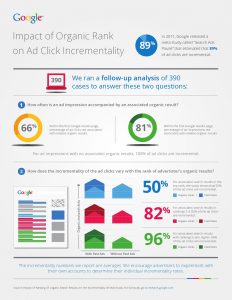As a business owner, you probably know the power of having a strong online presence. In today’s digital world, being easily discoverable by potential customers is crucial for the success and growth of your business. This is where Search Engine Optimization (SEO) comes into play. By optimizing your website for search engines, you can improve your online visibility, drive more organic traffic, and ultimately increase your revenue. In this comprehensive guide, we will walk you through the key SEO strategies and techniques that can take your business to new heights.
What is SEO and Why Does It Matter?
Before diving into the technicalities, it’s essential to understand what SEO is and why it is vital for your business. SEO refers to the process of optimizing your website and its content to rank higher in search engine results pages (SERPs) organically. By improving your SEO, your website is more likely to appear on the first page of search results when potential customers search for relevant keywords related to your business.
Research shows that when searching for products or services, the majority of users don’t move beyond the first page of search results. Therefore, if your website doesn’t rank well, you could be missing out on valuable organic traffic and potential customers. SEO helps you level the playing field with your competitors and ensures that your business is visible to those who are actively seeking what you offer.
On-Page SEO Optimization
One of the fundamental aspects of SEO is on-page optimization. This involves optimizing the elements directly on your website to improve its visibility in search engine results. Below are some essential on-page SEO factors you should consider:
1. Keyword Research
The foundation of any successful SEO strategy begins with thorough keyword research. This process involves identifying the most relevant, high-value keywords that your potential customers are using to find products or services similar to yours. By incorporating these keywords throughout your website, you increase the likelihood of ranking higher in search results for those specific terms.
2. High-Quality and Engaging Content
Content is king, and search engines love it. By creating high-quality, informative, and engaging content, you not only attract and retain visitors, but you also signal to search engines that your website offers value. When crafting your content, keep in mind your target audience’s needs and pain points. Aim to deliver valuable information, answer frequently asked questions, and provide solutions to common problems in a way that is easy to understand.
3. Meta Tags, Titles, and Headings
Optimizing your website’s meta tags, titles, and headings is crucial for SEO. These elements provide a preview of your webpage’s content to search engines and users. Ensure that your titles are catchy and contain relevant keywords while accurately describing the content. Utilize heading tags (H1-H6) to structure your content and make it more accessible for both users and search engines.
4. URL Structure and Site Navigation
A well-structured URL and intuitive site navigation play a significant role in improving your website’s SEO. Keep your URLs concise, descriptive, and optimized with relevant keywords. Avoid using long, confusing URLs that are difficult for both users and search engines to understand. Additionally, ensure that your website’s navigation is user-friendly and logical, allowing visitors and search engine crawlers to easily navigate through your site’s content.
5. Page Loading Speed Optimization
In the fast-paced digital world, every second counts. Page loading speed is a critical factor for user experience, and it directly impacts your website’s search engine rankings. Slow loading pages lead to higher bounce rates, negatively affecting your SEO efforts. Optimize your website’s loading speed by compressing images, minifying CSS and JavaScript files, and leveraging browser caching to provide a seamless browsing experience for your visitors.
Off-Page SEO Optimization
While on-page optimization concentrates on your website itself, off-page SEO focuses on actions carried out outside of your website to boost its visibility and authority. Below are some key off-page SEO tactics to consider:
1. Link Building
Link building is an essential off-page SEO strategy. In simple terms, it involves getting other reputable websites to link back to your website. Search engines interpret these backlinks as votes of confidence, indicating that your website offers value and authority. However, it’s important to focus on quality over quantity. Seek links from industry-relevant and high-authority websites that genuinely endorse your content, as search engines prioritize the credibility and relevance of the linking domains.
2. Social Media Engagement
Social media platforms are not only valuable for reaching and engaging with your target audience, but they also play a role in off-page SEO. Sharing your content on various social media channels can increase its visibility, create opportunities for engagement, and potentially generate backlinks from authoritative sources. By fostering relationships with your followers and encouraging social sharing of your content, you can amplify your reach and improve your website’s visibility in search results.
3. Online Directory Listings
Listing your business in online directories can significantly impact your website’s SEO. Ensure that your business details, including the address, phone number, and website link, are consistently listed across reputable directories such as Google My Business, Yelp, and Yellow Pages. These listings not only provide potential customers with accurate information about your business; they also act as citations that validate the legitimacy and relevance of your website.
4. Influencer Partnerships
Influencer marketing has gained significant traction in recent years. Collaborating with influencers in your industry can expose your business to their loyal audiences, drive targeted traffic to your website, and potentially result in valuable backlinks. Identify influencers whose audience aligns with your target market and reach out to establish mutually beneficial partnerships. By leveraging their reach and credibility, you can enhance your brand’s visibility and authority, guiding potential customers toward your website.
Monitoring and Analytics
SEO is an ongoing process, and monitoring its performance is crucial to ensuring continued success. Here are some important monitoring and analytics techniques to consider:
1. Google Analytics
Utilize Google Analytics to monitor key metrics such as organic traffic, bounce rates, conversion rates, and user behavior on your website. Analyzing this data provides valuable insights into what is working well and what areas need improvement. With accurate data guiding your decisions, you can refine your SEO strategy to drive better results and maximize ROI.
2. Search Console
Google Search Console is another indispensable tool for monitoring your website’s search performance. It provides detailed reports about your website’s visibility in Google Search results, alerts you to indexing issues, and offers valuable suggestions for improving your website’s organic performance. Regularly check your Search Console account to identify any potential issues that may be hindering your SEO efforts and take appropriate action.
Conclusion
In this day and age, neglecting SEO is a significant missed opportunity for any business. By implementing the strategies and techniques discussed in this guide, you can improve your online visibility, attract more organic traffic, and ultimately increase your revenue. Remember that SEO is a long-term investment, requiring consistent effort and continuous adaptation to evolving search engine algorithms.
Whether you choose to tackle SEO on your own or hire professionals, having a solid understanding of the key principles and elements of SEO is essential to guide your strategy. Stay proactive, monitor your website’s performance, and be willing to adapt your approach to achieve optimal results. By harnessing the power







